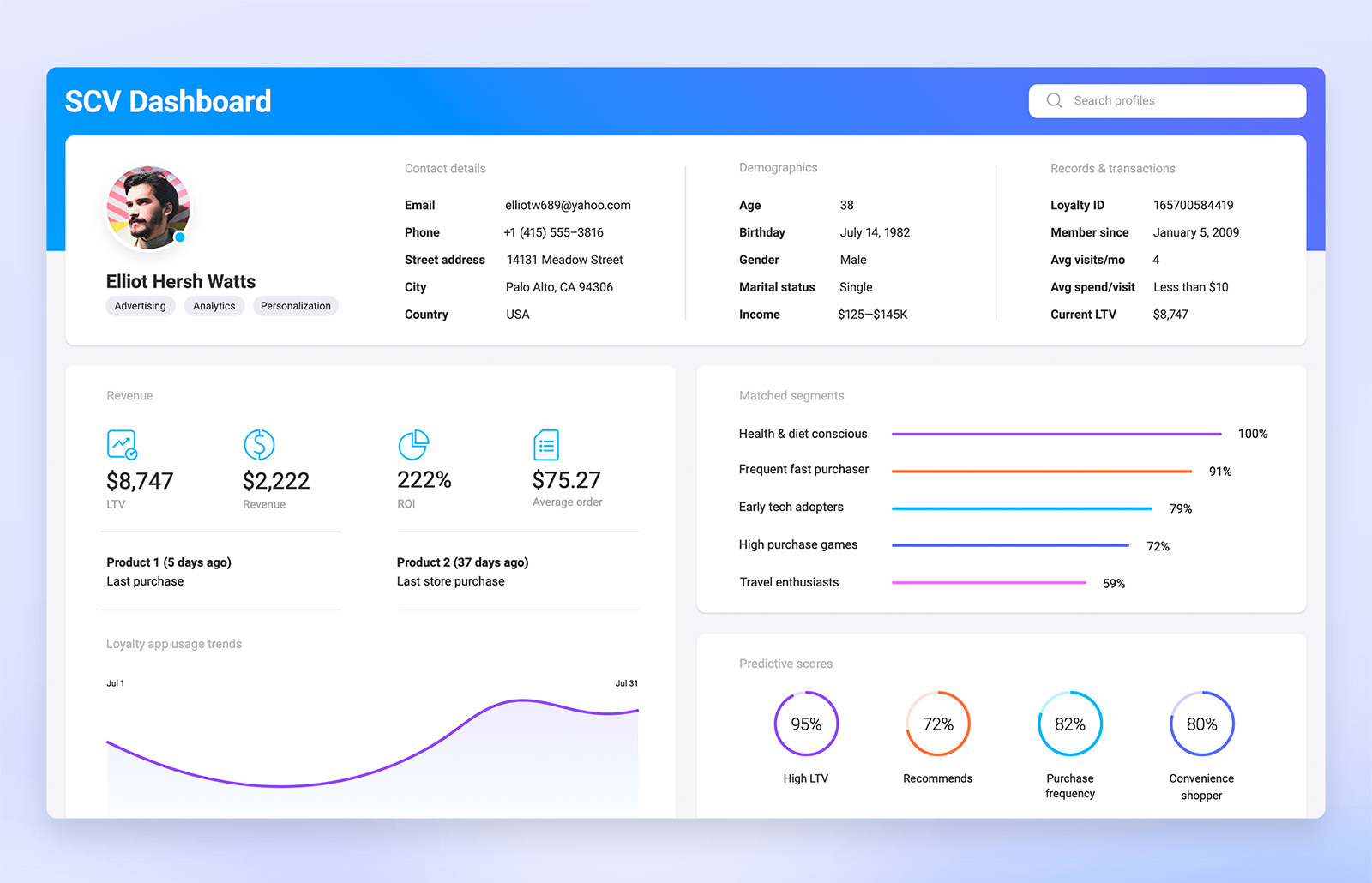What Is a Single Customer View (SCV)? And Why Should Marketers Care?
Last updated April 13, 2021
Definition and Meaning for Data-Driven Marketers
What is a single customer view (SCV)? What does SCV mean? And why should data-driven marketers care? You might have heard the buzz surrounding this term, which is enmeshed in almost every discussion of Customer Data Platforms (CDPs). Short for “Single Customer View,” an SCV is a dashboard containing the customer data for a single person.
An SCV—also called Customer 360 View (C360) or Unified Customer View (UCV)—contains personally identifiable information such as name, mobile number, address, age, as well as purchase history, loyalty program activity, and previous communications.
Typically, CDPs produce single customer views (SCVs) when you drill down from a view of your big data—such as when building or analyzing a marketing segment—to look at individual records.
SCVs can be very helpful in account-based marketing (ABM) campaigns, when you need to really get to know an individual decision maker. An SCV can also be critical when you’re looking at individuals to help inform your insights about segmentation and who your customers really are, for developing personas, better campaigns, personalization, and customer experiences.
Treasure Data CDP provides an information-rich SCV, so marketers can easily find the information that matters the most to them.

An example of the information-rich Single Customer View (SCV) available in Treasure Data’s CDP.
Why Single Customer Views (SCVs) Are Not All Alike—and Why This Matters
CDP vendors vary quite a bit in the information they include, how they present the information, and how easy it is to look at the information. In the example above, it’s easy to find contact details, such as name, email, phone number and address, as well as demographics, like age, birthday, gender, and marital status. These are fairly common; most vendors show you this basic demographic info.
Less common is the entry “consent information,” which details the customer’s privacy preferences and shows you how your customer wishes you to use (or not use) private information. (Treasure Data CDP also uses this information to automate privacy and security controls for each of your customers.)
Treasure Data’s SCV also includes several helpful calculations based on your customer’s data and behavior, such as the current customer lifetime value (usually abbreviated LTV or CLTV) and total revenue spent at the store to date. This view also includes recent purchase information, loyalty app usage, segments, and predictive scores.
Why It’s Important to Pick a CDP that Helps You Easily Customize SCVs
Different businesses care about different types of data. That’s why, in addition to common demographic and purchase information, some providers allow you to easily customize SCVs, so they contain the information most important to your business. Ask any potential CDP vendor if they allow you to customize views, and whether they provide easy tools to help you do that. For example, Treasure Data makes available pre-built code and tools to help customize SCVs—called “Treasure Boxes.” This allows companies to track unique business metrics in a customized SCV.
Evaluating SCVs and CDPs
When you compare SCVs, look for the following:
- Is the information provided sufficient for your business’s basic needs?
- Are they easy to look at? Is the user interface intuitive and easy to understand?
- Can you get a good picture of an individual customer in a segment?
- Can you search on any or all fields, or are you stuck with “fill-in-the-field” search capabilities?
- Does the CDP provider offer easy-to-use tools and code for quick customization?
- Can you see or search for event, behavioral, or journey data, such as purchases, visits, or emails?
- Can you see segment inclusion data?
- Can you see machine learning data such as the best time to engage, best channels, and propensities?
All of these questions are important, but for most companies, customizability of SCVs is key to getting customer information that works. See also our article on Building a Single Customer View (SCV).
For more information on SCVs, CDPs, customer personalization, segmentation, and more, visit treasuredata.com. Or send your questions directly to our CDP experts.